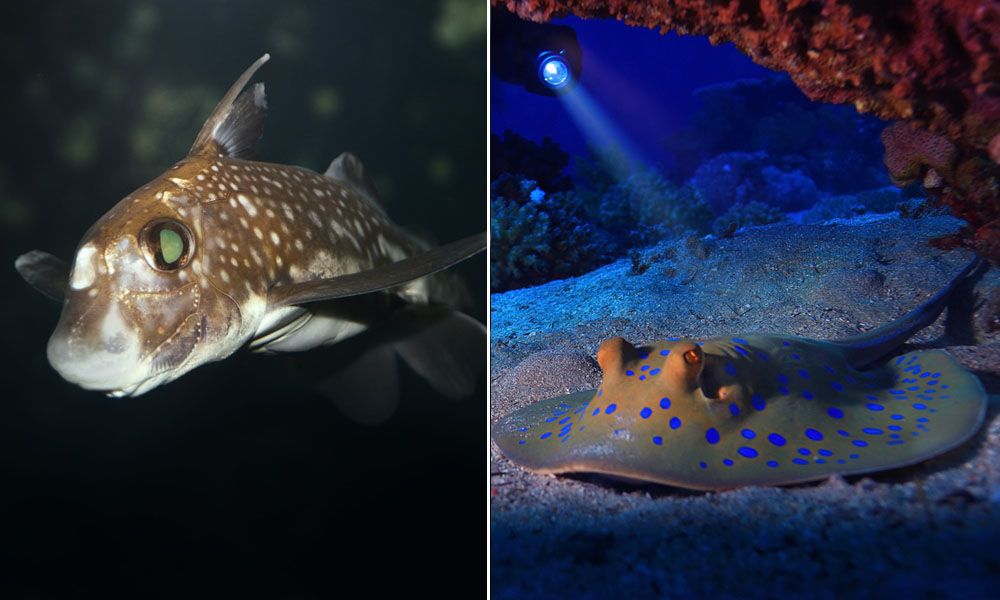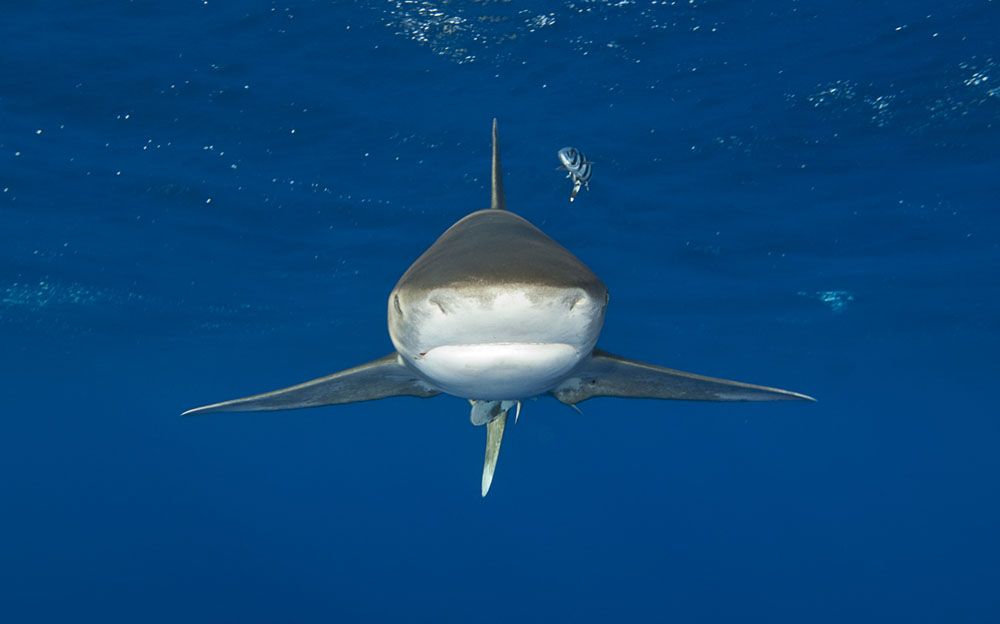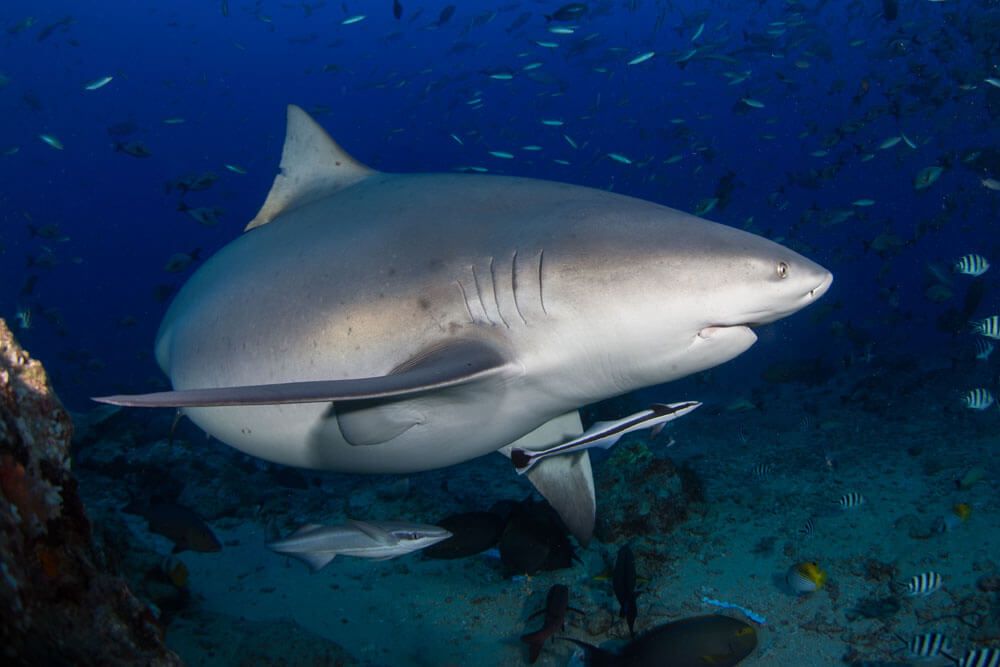
July 14 is World Shark Awareness Day, but people should be aware of sharks every day! To celebrate one of the ocean’s oldest, most diverse, and most interesting groups of animals, here’s 10 shark facts that everybody needs to know
Shark fact 1: older than the hills
Sharks have been around for more than 400 million years. They pre-date the dinosaurs by nearly 200 million years and they have been in the Earth’s oceans for 30 million years longer than trees have been on the surface. That’s also around 399.9 million years before modern humans appeared. The frilled shark (Chlamydoselachus anguineus) has remained biologically unchanged for around 150 million years.
Sharks live for between 25 to 100 years, however, a female Greenland shark (Somniosus microcephalus) specimen was officially recorded as 392 years of age, with a 120-year margin of error, meaning that it could be as old as 512, or as ‘young’ as 272. Either way, it makes her the longest-living species of vertebrate (animals with backbones) known to science.
Shark fact 2: size isn’t everything
Whale sharks (Rhincodon typus) are the largest species of fish in the ocean, measuring up to a reported 14m in length (the largest officially recorded was 12.65m) and weighing in at a staggering 21 tonnes.
Basking sharks (Cetorhinus maximus), the world’s second-largest fish, reach a mere 10m long by comparison. Both are filter feeders, collecting plankton and the occasional small fish in their gaping mouths.
The smallest shark, by contrast, is the dwarf lantern shark (Etmopterus perryi), which measures only 20cm in length – smaller than some of the spots on a whale shark.
Shark fact 3: no bones about that!

Sharks are elasmobranchs, a family of fish that has skeletons made up entirely of cartilage, not bone. As a result, study of shark history is extremely difficult as the only thing that remains in the fossil record is their teeth.
Despite pictures of gaping toothy maws splashed across the tabloids, most shark teeth are really tiny – if they even have them at all. Rays and chimeras are also elasmobranchs.
Shark fact 4: can’t stop, sorry, breathing
Most species of shark are ‘ram-ventilators’, meaning that oxygenated water is passed through their gills as they swim. Many species also have a secondary method of breathing known as ‘buccal pumping’, the ability to suck water through their open mouths (or via spiracles) and pass it over the gills, allowing some sharks to rest, or more importantly in the case of bottom-dwellers such as the nurse shark and wobbegong, to remain stationary while they wait for lunch to pass by.
Some sharks, however – particularly large pelagic species – have lost this ability entirely, and are known as ‘obligate ram-ventilators’. The likes of great whites (Carcharodon carcharias), shortfin mako (Isurus oxyrinchus) and whale sharks can never stop swimming or they would asphyxiate.
Shark fact 5: super sensitive
Sharks have sensors – the ampullae of Lorenzini – around their snouts which are able to sense even the most minute electric changes in the seawater. It allows them not only to sense the smallest of movements, but also to detect blood, as it causes minuscule changes in the electrical conductivity of the water.
Their sense of smell is also highly developed, allowing them not only to sense odours in the water at a distance, but also what direction they’re coming from.
Shark fact 6: it’s sink or swim

Sharks are negatively buoyant. If they stop moving, they sink. The cartilaginous skeleton reduces overall body weight and a large and fatty liver aids with buoyancy, while their pectoral fins act as hydrofoils – the underwater equivalent of aeroplane wings – generating lift as they move through the water.
Shark fact 7: independent women

Some female sharks are capable of ‘parthenogenesis’ – that is to say, they can become pregnant without any contact from a male shark.
Parthenogenic births have been scientifically documented in blacktip sharks, zebra sharks and the bonnethead (a type of small hammerhead), but are also thought to occur in other species.
Shark fact 8: eggs, pups, or both

Some sharks lay eggs, others give birth to live pups, some do a mixture of both. Egg-laying – or oviparous – sharks such as catsharks, deposit leather eggs between rocks or attached to underwater plants and corals. Once the young are born the empty cases can often be found washed ashore, called ‘mermaids’ purses’.
Some sharks such as bull sharks are viviparous, meaning the pups gestate inside the female in much the same way as mammals. Most sharks are ovoviviparous, meaning the eggs are kept within the female’s body until they hatch, when they give birth to live offspring.
The first pups to hatch from the eggs often devour their unborn siblings inside the female. Grim.
Shark fact 9: stop the needless slaughter

Shark attacks are very rare and only a handful of fatalities are reported each year. On the other hand, up to 100 million sharks each year are killed by humans.
This is often the result of accidental bycatch during industrial-scale fishing, knee-jerk responses to shark attacks such as massive culls off the coast of Australia – which killed more other species of wildlife than the so-called ‘dangerous sharks’ – and most horrifically, the shark-finning trade, used to make a traditional Asian soup as a sign of wealth and virility.
Sharks are caught and butchered alive; their fins cut off before being thrown back into the sea to die. Despite worldwide outcry and measures to stop the international trade in shark fins, massive hauls of illegally caught sharks are regularly being brought to market.
Shark fact 10: Save Our Sharks
There are more than 500 species of shark that are known to exist, and possibly more. At least 75 species are listed by the IUCN and CITES as ‘vulnerable’ to ‘critically endangered’, meaning that there is a real risk of possible species extinction in the near future.
Some – such as the great white, tiger, bull and mako shark – are classed as ‘apex predators’, but all sharks play a vital role in preserving the aquatic environment. They are not one of Planet Earth’s most successful animals for no good reason, and nothing good can come of removing them from the world’s oceans.
Spread the word – leave them alone.


